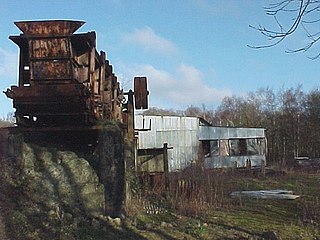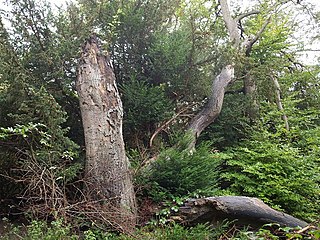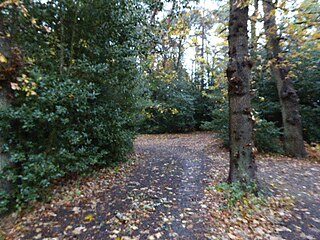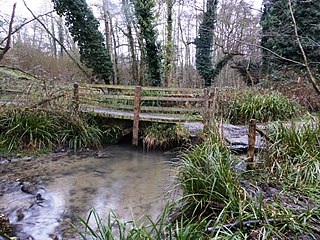| Site of Special Scientific Interest | |
 | |
| Area of Search | Surrey |
|---|---|
| Grid reference | SU 951 443 [1] |
| Interest | Biological |
| Area | 68.4 hectares (169 acres) [1] |
| Notification | 1986 [1] |
| Location map | Magic Map |
Charterhouse to Eashing is a 68.4-hectare (169-acre) biological Site of Special Scientific Interest west of Godalming in Surrey. [1] [2]

A Site of Special Scientific Interest (SSSI) in Great Britain or an Area of Special Scientific Interest (ASSI) in the Isle of Man and Northern Ireland is a conservation designation denoting a protected area in the United Kingdom and Isle of Man. SSSI/ASSIs are the basic building block of site-based nature conservation legislation and most other legal nature/geological conservation designations in the United Kingdom are based upon them, including national nature reserves, Ramsar sites, Special Protection Areas, and Special Areas of Conservation. The acronym "SSSI" is often pronounced "triple-S I".

Godalming is a historic market town, civil parish and administrative centre of the Borough of Waverley in Surrey, England, 4 miles SSW of Guildford. The town traverses the banks of the River Wey in the Greensand Ridge – a hilly, heavily wooded part of the outer London commuter belt and Green Belt. In 1881, it became the first place in the world to have a public electricity supply and electric street lighting.

Surrey is a subdivision of the English region of South East England in the United Kingdom. A historic and ceremonial county, Surrey is also one of the home counties. The county borders Kent to the east, East and West Sussex to the south, Hampshire to the west, Berkshire to the northwest, and Greater London to the northeast.
This is a steep valley cut through a broad flood plain. Much of the site is wooded, with areas of tall fen, grassland and standing water. There is a diverse fly population, including several rare species, such as Lonchoptera scutellata cranefly , Stratiomys potamida and the cranefly Gonomyia bifida . [3]

Flies are insects with a pair of functional wings for flight and a pair of vestigial hindwings called halteres for balance. They are classified as an order called Diptera, that name being derived from the Greek δι- di- "two", and πτερόν pteron "wings". The order Diptera is divided into two suborders, with about 110 families divided between them; the families contain an estimated 1,000,000 species, including the familiar housefly, horse-fly, crane fly, and hoverfly; although only about 125,000 species have a species description published. The earliest fly fossils found so far are from the Triassic, about 240 million years ago; phylogenetic analysis suggests that flies originated in the Permian, about 260 million years ago.
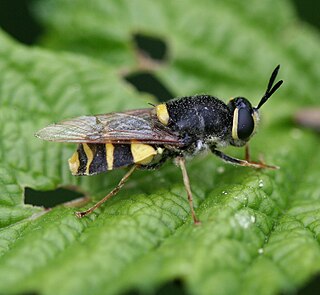
Stratiomys potamida, the banded general, is a European species of soldier fly.

